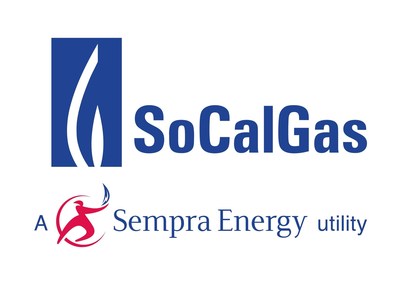
We could not find any results for:
Make sure your spelling is correct or try broadening your search.
| Share Name | Share Symbol | Market | Type |
|---|---|---|---|
| Sempra | NYSE:SRE | NYSE | Common Stock |
| Price Change | % Change | Share Price | High Price | Low Price | Open Price | Shares Traded | Last Trade | |
|---|---|---|---|---|---|---|---|---|
| -0.9502 | -1.32% | 71.0298 | 72.36 | 71.31 | 72.03 | 3,161,507 | 01:00:00 |
LOS ANGELES, March 31, 2015 /PRNewswire/ -- A study published today in Environmental Science & Technology finds methane emissions from U.S. local natural gas distribution systems, including Southern California Gas Co.'s (SoCalGas), are 36 to 70 percent lower than current estimates by the U.S. Environmental Protection Agency.
Researchers concluded the reductions were due to infrastructure modernization and increased investment in leak prevention by utilities. This included upgrades in metering and regulating stations, changes in pipeline materials, and better instruments for detecting pipeline leaks — as well as regulatory changes.
"SoCalGas recognizes the importance of reducing emissions and these findings validate our long-term efforts to modernize our infrastructure to enhance safety, safeguard reliability and reduce emissions," said Bret Lane, chief operating officer of SoCalGas. "SoCalGas will continue to work with regulatory agencies, researchers and the community to prudently invest resources in our system and protect our environment."
Led by Regents Professor Brian Lamb in WSU's Laboratory for Atmospheric Research, the study provides the most comprehensive set of direct measurements of emissions from the distribution system to date. They estimate that emissions from the distribution system are between 0.1 and 0.2 percent of the natural gas delivered nationwide. SoCalGas' natural gas system has among the lowest emissions rates in the country despite it being the largest.
SoCalGas participated in the study to help increase knowledge about methane emissions across the country and to better understand the impact of infrastructure maintenance and modernization efforts.
SoCalGas' voluntary emissions reduction efforts began more than two decades ago — well before any mandatory programs, such as California's Global Warming Solution Act (AB 32), went into effect — and include:
The study, which was supported by the Environmental Defense Fund, 13 major natural utilities, including SoCalGas, and engineering and environmental consulting firms, updates data from the 1990s. The researchers took direct measurements in multiple cities from 230 randomly selected, representative underground pipelines and 229 stations where natural gas is measured and regulated.
The participating natural gas utilities own and operate 19 percent of the nation's distribution pipeline mileage and account for 16 percent of the total gas delivered to customers in 2011.
To learn more about the study visit: http://methane.wsu.edu.
About Southern California Gas Co.
Southern California Gas Co. has been delivering clean, safe and reliable natural gas to its customers for more than 140 years. It is the nation's largest natural gas distribution utility, providing service to 21.4 million consumers connected through 5.9 million meters in more than 500 communities. The company's service territory encompasses approximately 20,000 square miles throughout central and Southern California, from Visalia to the Mexican border. Southern California Gas Co. is a regulated subsidiary of Sempra Energy (NYSE: SRE), a Fortune 500 energy services holding company based in San Diego.

Logo - http://photos.prnewswire.com/prnh/20150126/171209LOGO
To view the original version on PR Newswire, visit:http://www.prnewswire.com/news-releases/study-finds-methane-emissions-from-us-natural-gas-distribution-systems-36-to-70-percent-lower-than-current-epa-estimates-300058798.html
SOURCE Southern California Gas Co.

Copyright 2015 PR Newswire
1 Year Sempra Chart |
1 Month Sempra Chart |

It looks like you are not logged in. Click the button below to log in and keep track of your recent history.
Support: +44 (0) 203 8794 460 | support@advfn.com
By accessing the services available at ADVFN you are agreeing to be bound by ADVFN's Terms & Conditions